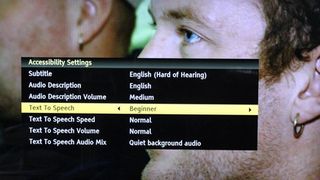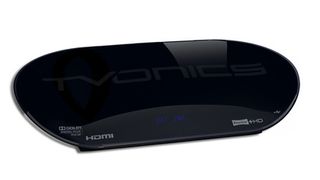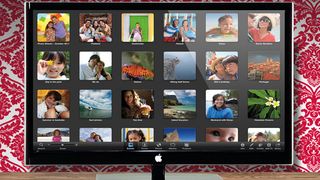Will Apple's iTV feature voice recognition and a speaking program guide?
Talking TVs could change the way we interact with our electronics
Although Panasonic is the first TV manufacturer to offer a talking - as opposed to a listening - feature, it's not the only company hitting back with chat.
From this month all new products from British set-top box maker TVonics have special text-to-speech software called IVONA installed, while those with existing DTR-HD500 or DTR-Z500HD set-top boxes can download the software for free from the RNIB and TVonics websites.
We tested a re-vamped DTR-HD500 and found the voice guidance system - which is based on IVONA software - exceptionally easy to use. Forget about the sight issue; this tech is ideal for anyone in the least bit nervous about the digital age.

The voice is less robotic than on the Panasonic TV, though functionality is similar. While tuning-in DVB channels we're regularly informed of the progress (for example, '45%, 24 channels found'), and when we engage the EPG we're talked through choosing channels in an impressively smooth manner. The wording is almost identical to the Panasonic - programme title, channel, timings etc - but the TVonics also tells you what's on next.
Press the pause button and the voice pipes-up, 'paused at three seconds behind live TV' before saying 'playing from 23 seconds behind live TV' upon un-pausing.
Recording is easy, too, and not just single programmes - series links are also simply explained. What we liked best is that the box tells you exactly what it's doing at all times, right down to 'preparing timer' to 'now recording' for the exact second it's started recording.
That's useful tech for all users. The TVonics box is slightly different since all menus are explained, for example uttering 'Six options. First, General Settings. Press OK to access' when faced with a list of options.
Get daily insight, inspiration and deals in your inbox
Get the hottest deals available in your inbox plus news, reviews, opinion, analysis and more from the TechRadar team.

"The RNIB did a lot of work to get the IVONA software to a high standard, and also worked with TVonics," says Petre. "The main difference between the two is that with TVonics there has been a small investment from the RNIB."
It may lack the all-in-one experience boasted by the Panasonic, but the actual voice guidance system TVonics is more polished and comprehensive.
Siri at your service
Voice-activated, voice-guided TV could soon be with us via Apple's much-rumoured Apple iTV, which could well use the Siri voice recognition feature as a replacement for remote controls.

In terms of accessibility, Apple has history. "The iPhone and iPad have voice output, so Apple seems to consider it a standard feature," says Petre, who also praises the iPhone for its zoom function, which has enabled blind and partially sighted people to use a normal phone.
"An Apple TV could be accessible, but if it's more about downloading films and on-demand TV it's in a different category of product than a TV you use all the time."
If it does chat, guide and advice, Apple's hotly tipped TVs will presumably answer back in Siri's typically sarcastic-cum-apologetic manner. Expect 'Record Match of the Day' to soon be met with, 'Sorry, I don't understand. Your team has just been relegated. Football League Show will record instead.'
Jamie is a freelance tech, travel and space journalist based in the UK. He’s been writing regularly for Techradar since it was launched in 2008 and also writes regularly for Forbes, The Telegraph, the South China Morning Post, Sky & Telescope and the Sky At Night magazine as well as other Future titles T3, Digital Camera World, All About Space and Space.com. He also edits two of his own websites, TravGear.com and WhenIsTheNextEclipse.com that reflect his obsession with travel gear and solar eclipse travel. He is the author of A Stargazing Program For Beginners (Springer, 2015),

